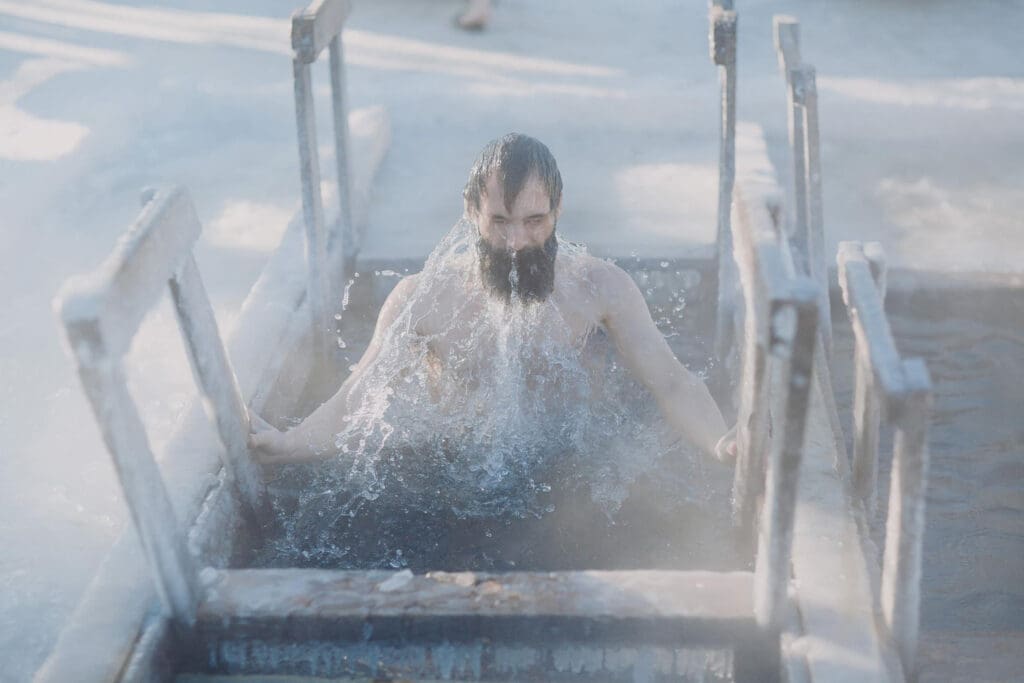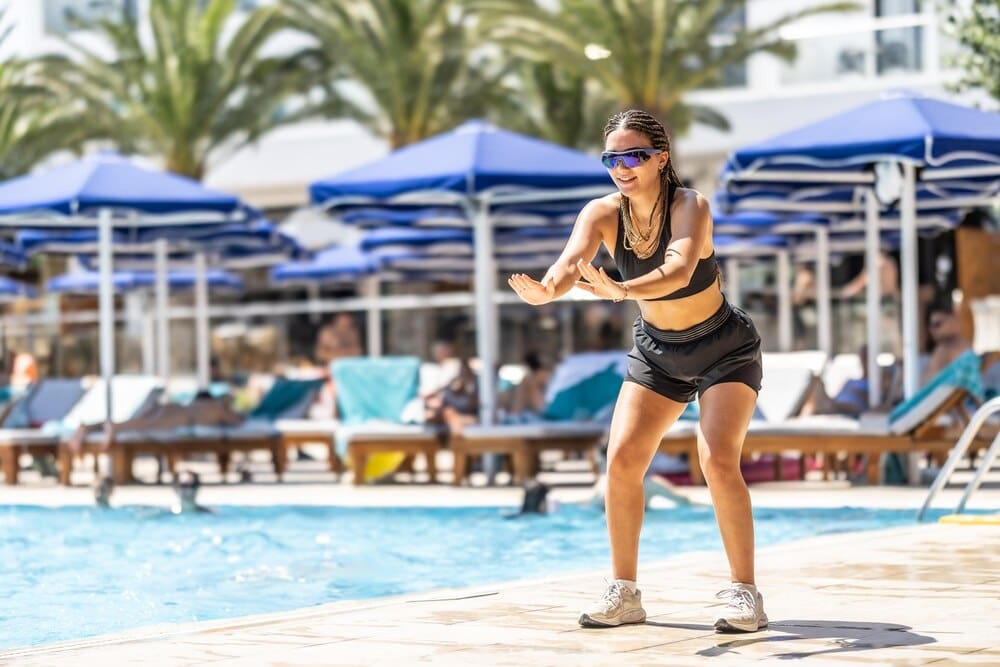Executive Summary
- Cold water immersion (ice baths) is an evidence-backed strategy for runners to accelerate muscle recovery, reduce inflammation, and enhance overall resilience, particularly beneficial in demanding climates like Miami.
- Ice baths work by causing vasoconstriction to reduce swelling, followed by vasodilation to flush metabolic waste and deliver oxygenated blood, while also providing an analgesic effect and impacting the nervous system for stress resilience.
- For safe and effective use, ice baths should be at 10-15°C (50-59°F) for 5-10 minutes, with proper pre- and post-immersion protocols, and individuals with certain medical conditions should consult a doctor.
The Story So Far
- Cold water immersion, or ice baths, has become an evidence-backed recovery strategy for athletes due to its physiological effects of reducing inflammation, flushing metabolic waste, and providing pain relief, which collectively accelerate muscle recovery and enhance performance. For runners, especially those in challenging tropical climates like Miami, ice baths are particularly crucial as they effectively combat heat stress and aid in thermoregulation, addressing the amplified physiological demands of running in high heat and humidity.
Why This Matters
- For runners, particularly those training in demanding hot and humid conditions like Miami, strategic cold water immersion is a powerful tool to accelerate muscle recovery, significantly reduce inflammation and Delayed Onset Muscle Soreness (DOMS), and rapidly cool the body to mitigate heat stress. This comprehensive approach to recovery enables more consistent, high-quality training, ultimately boosting performance, endurance, and mental resilience crucial for sustained peak athletic achievement.
Who Thinks What?
- Cold water immersion is considered an evidence-backed strategy for athletes, accelerating muscle recovery, reducing inflammation, and enhancing overall resilience due to its physiological effects.
- Runners, especially those in demanding climates like Miami, view ice baths as a powerful tool to combat heat stress, improve thermoregulation, and enhance performance and endurance.
- For safe and effective use, it is advised to adhere to optimal temperature and duration guidelines, and individuals with certain medical conditions should consult a doctor before attempting cold water immersion.

For runners navigating the demanding heat and humidity of Miami, optimizing recovery and unlocking peak performance is an ongoing challenge. Cold water immersion, commonly known as an ice bath, has emerged as a powerful, evidence-backed strategy for athletes seeking to accelerate muscle recovery, reduce inflammation, and enhance their overall resilience. By strategically exposing the body to cold temperatures post-exercise, runners can mitigate the physiological stress of intense training and environmental factors, potentially leading to faster bounce-back times and improved performance on the pavement, track, or trail.
The Science Behind the Chill: How Cold Water Immersion Works
The immediate sensation of an ice bath is undeniably intense, but the physiological responses triggered are precisely why athletes embrace the chill. When the body is immersed in cold water, peripheral blood vessels constrict rapidly, a process known as vasoconstriction. This constriction helps to reduce blood flow to the immersed areas, which in turn minimizes swelling and inflammation in muscle tissues that may have been damaged during strenuous exercise.
Upon exiting the cold water, the blood vessels dilate, allowing a rush of fresh, oxygenated blood to flow back into the muscles. This “flushing” effect is believed to help remove metabolic waste products, such as lactic acid, that accumulate during intense physical activity. By facilitating the removal of these byproducts and delivering nutrients, ice baths can accelerate the muscle repair process.
Beyond the vascular effects, cold water immersion also impacts the nervous system. The initial “cold shock” response activates the sympathetic nervous system, leading to a release of hormones like noradrenaline. While this response can be uncomfortable, regular exposure may help improve stress resilience and even mood, thanks to the subsequent parasympathetic activation and dopamine release.
Furthermore, the cold temperature has an analgesic effect, numbing nerve endings and providing immediate pain relief. This can be particularly beneficial for runners experiencing delayed onset muscle soreness (DOMS), making the days following a hard workout or long run more manageable and less painful.
Specific Benefits for Runners: From Recovery to Resilience
For runners, the benefits of incorporating ice baths into a recovery regimen extend far beyond simply feeling refreshed. They offer a multifaceted approach to enhancing physical and mental readiness for subsequent training sessions and races.
Accelerated Muscle Recovery and Reduced DOMS
One of the primary reasons runners turn to ice baths is to speed up muscle recovery. Intense running, especially long distances or high-intensity intervals, causes microscopic tears in muscle fibers. These tears lead to inflammation and the characteristic soreness known as DOMS.
By reducing inflammation and swelling at the cellular level, ice baths help to mitigate the severity and duration of DOMS. This means runners can recover more quickly, feeling less stiff and sore, and can return to their training schedule with less downtime. The quicker recovery allows for more consistent training, which is crucial for progressive improvement.
Enhanced Performance and Endurance
While ice baths directly aid recovery, their indirect impact on performance is significant. By ensuring faster and more complete recovery, runners can maintain a higher quality of training over time. This consistent, high-level training is what ultimately builds endurance, speed, and strength.
Moreover, there’s a psychological component. The mental discipline required to endure an ice bath can build resilience and mental toughness, qualities that are invaluable in running. Feeling recovered and less fatigued also contributes to a more positive mindset, which can translate into better race-day performance and an improved ability to push through discomfort.
Managing Inflammation and Injury Prevention
Chronic inflammation is a silent enemy for many athletes, contributing to overuse injuries and hindering performance. Ice baths offer a systemic approach to managing inflammation, not just in acutely sore muscles, but throughout the body.
Regular, strategic use of cold water immersion can help keep inflammatory markers in check, potentially reducing the risk of common running injuries like tendinitis or plantar fasciitis. While not a cure-all, it serves as a proactive measure within a comprehensive injury prevention strategy that includes proper training load management, strength work, and adequate rest.
The Miami Factor: Optimizing Recovery in a Tropical Climate
Miami’s unique climate presents distinct challenges for runners, making effective recovery strategies even more critical. The high heat and relentless humidity amplify the physiological stress of running, placing greater demands on the body’s thermoregulatory system.
Combating Heat Stress and Humidity
Running in Miami means constantly battling elevated core body temperatures and significant fluid loss through sweat. These conditions can lead to heat stress, fatigue, and a decline in performance. Ice baths offer an immediate and highly effective method for rapidly cooling the body post-run.
By lowering core body temperature quickly, ice baths can help prevent overheating, reduce the strain on the cardiovascular system, and accelerate the body’s return to a homeostatic state. This rapid cooling is particularly beneficial after long runs or intense workouts conducted in the peak heat of the day, allowing runners to feel more comfortable and recover more efficiently.
Improved Thermoregulation
Beyond immediate cooling, consistent exposure to cold water can actually contribute to improved thermoregulation over time. Some research suggests that regular cold exposure can enhance the body’s ability to adapt to temperature changes, potentially making runners more resilient to both heat and cold.
While more research is needed to fully understand the long-term thermoregulatory benefits for heat adaptation, the immediate cooling effect is undeniable. For Miami runners, anything that helps the body cope with and recover from heat stress is a valuable tool in their performance arsenal.
Practical Application: How to Take an Ice Bath Safely and Effectively
To reap the full benefits of ice baths, it’s essential to approach them with a clear understanding of best practices and safety considerations. Proper technique ensures effectiveness while minimizing risks.
Optimal Temperature and Duration
The ideal temperature for an ice bath typically ranges between 10-15°C (50-59°F). Temperatures significantly colder than this are not necessarily more effective and can increase the risk of adverse reactions. Aim for a duration of 5 to 10 minutes. Shorter durations may not provide sufficient physiological response, while longer durations can increase the risk of hypothermia or frostbite, especially in colder temperatures.
It’s crucial to listen to your body. If you are new to ice baths, start with slightly warmer water and shorter durations, gradually decreasing temperature and increasing time as your tolerance improves. Consistency is often more important than extreme cold or prolonged exposure.
Pre- and Post-Immersion Protocol
Before entering an ice bath, ensure you are well-hydrated. Some athletes find it helpful to wear a warm hat or a jacket to keep their upper body warm, as this can make the experience more tolerable. Enter the water gradually to allow your body to adjust to the cold shock; avoid plunging in headfirst.
After your immersion, resist the urge to immediately jump into a hot shower. Allow your body to rewarm naturally, or take a cool shower that gradually increases in temperature. Dry off completely and put on warm, dry clothes. Gentle movement, like walking, can also help stimulate blood flow and aid the rewarming process.
Safety Considerations and Contraindications
While generally safe for healthy individuals, ice baths are not for everyone. Individuals with certain medical conditions, such as cardiovascular disease, high blood pressure, diabetes, Raynaud’s disease, or open wounds, should consult a doctor before attempting cold water immersion. Pregnant individuals should also seek medical advice.
Always avoid ice baths if you are feeling unwell, feverish, or experiencing any signs of hypothermia. Never consume alcohol before or during an ice bath, as it can impair your body’s ability to regulate temperature. If you experience severe discomfort, numbness, or extreme shivering, exit the bath immediately.
Integrating Ice Baths into Your Training Regimen
The strategic incorporation of ice baths can significantly enhance a runner’s training program, but it’s important to understand when and how often to use them to maximize benefits without hindering other aspects of performance.
When to Use Them: Strategic Timing
Ice baths are most beneficial after particularly strenuous workouts, such as long runs, intense speed work, or races. They are designed to accelerate recovery from significant muscle damage and inflammation. Using them after every easy run might be overkill and unnecessary.
Consider the timing relative to strength training. Some research suggests that very frequent cold water immersion immediately after strength training might blunt some of the signaling pathways for muscle hypertrophy (growth). Therefore, if muscle gain is a primary goal, it might be wise to separate ice bath sessions from strength workouts by a few hours, or reserve them for endurance-focused days.
Alternative Cold Therapies
If a full ice bath isn’t feasible, there are alternative cold therapies that can offer some benefits. Cold showers, for example, can provide a milder form of cold exposure and are easily accessible. Targeted cold packs can be used for specific muscle groups or acute injuries.
For those with access, professional cryotherapy chambers offer brief exposure to extremely cold, dry air. While the mechanisms and benefits differ slightly from water immersion, they share the goal of rapid cooling and inflammation reduction. For home use, a large plastic tub filled with ice and water can serve as an effective DIY ice bath.
For Miami runners striving for peak performance and resilient recovery in a challenging climate, ice baths represent a powerful, evidence-informed tool. By strategically harnessing the physiological benefits of cold water immersion, athletes can accelerate recovery, mitigate inflammation, and enhance their overall physical and mental toughness. While not a magic bullet, when integrated thoughtfully into a holistic training and recovery plan, ice baths can indeed be a secret weapon, helping runners stay strong, healthy, and performing at their best.







